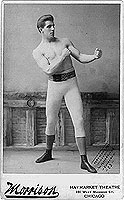As I write on Friday 1:30 p.m. my contact at Mondawmin informs me that squads of 10-15 students were breaking out of school and headed to the plundered mall as an ‘armored column' of national guard rolled up to meet them in 5 hum-vees and a large armored vehicle.
Now that the charges have been announced for the police whose everyday conduct finally brought on a riot they could not handle, I think we are out of the woods until the next media frenzy, or something really serious, like an interruption of EBT cash and food stamp distributions, causes another riot.
What did I observe on the ground that can be broken into operational elements for the next Harm City riot?
1. The only effective police units are the tactical squads with armored vehicles, with the police sedan being a virtual deathtrap in an urban environment.
2. Only key political and corporate positions were protected
3. The police announced that they had no ability or intention to protect anyone but themselves and the political elite. Even the press was told to fend for themselves.
4. The entire residential breadth of the city was abandoned to criminals with zero police presence during riot activity.
5. Most business sectors were abandoned to the criminals, with zero police presence.
6. Upscale urban enclaves were not protected! In the city only political and major corporate entities benefited from police protection.
7. In outlying suburban areas all available police were directed to choke points where the city mobs could get to the upper class York Road corridor north of Towson. All middle-class, working class, and poor Baltimore County districts were completely stripped of police manpower for the night time hours and run on half strength during the day. There was no increase in day time crime, but an increase in crime at night, which makes sense as most police engage in harassment work rather than deterrence.
8. It took more than 24 hours before any cohesive plan was initiated to take back control of the city, with crime in outlying areas continuing to be high for the duration of the week.
9. Peaceful protests had as much of a negative effect on outlying areas as violent protests, as the police were diverted for each.
Assessing the Combatants
I will use the Operational Combat Series action rating scale to grade the effectiveness of both sides. The scale is as follows.
5 = elite
4 = veteran
3 = operational standard
2 = below standard
1 = poor
0 = ineffective
The way this system of unit action rating works is on a comparative basis with a difference of 2 imparting an overwhelming operational advantage.
Criminal Units
Overall, in terms of strategic and tactical execution, the criminal syndicates that stage-managed the riots and the corollary looting rated:
-High school kids tasked with confronting the police as a rock armed mob= 2
-Gang members tasked with terrorizing outlying areas, armed with bats in groups of 5-15 = 3
-Break-in teams, who raided over 100 businesses in Northeast and East Baltimore without arrests, or casualties = 4
Defense Forces
-Patrol officers in sedans were completely ineffective, sustained casualties, and lost equipment = 0
-Police organized in riot gear managed to hold their ground but demonstrated poor tactical mobility, sustained casualties, and lost equipment = 1 or 2
-police tactical squads were effective but under utilized by their commanders =3
-National guard units =4
-Gun-armed home owners stopped two patrols of gang members in Gardenville, and two male motorists rescued women targeted for gang rape on the East Side, demonstrating a level of effectiveness on par with the Guard units = 4
The criminal success was largely due to avoiding guard contact and evading tactical squads while targeting the static units, patrol officers and civilian population. Seeing as the forces were evenly matched in quality I credit the anonymous gang leadership with superior planning and decision making, and the political and police leadership with gross neglect.
Below is an index of articles related to the subject of urban collapse and mob violence:











Chicago will be next, bank on it. Given Chi-town's reputation I doubt their city police will be as incompetent or restrained.
If there's something that could once again set off protests/riots in B'more, it would be acquittal of all the officers charged, IMO. It will be interesting to see how long it take to go to trial.
It will be interesting to see where the trial is held.
Chicago actually has a tax base to support a pretty autonomous police force so I imagine those cops will fare better than these. The BPD has essentially become an outpost for the federal drug war. I don't even regard it as much of a police force, but rather as a support system for combating the home grown drug gangs.
We recently discovered that Baltimore's school system is in debt up to at least 60 million dollars, with rumors it could be as high as 100 million.
Contrast that with Chicago who has a school system in debt to the tune of 1.1 BILLION dollars. The Illinois state government has made it clear that it will not bail out the school system, mostly due to the fact that the state is running a deficit of 5.5 billion. Chicago's debt rating was recently downgraded to one step above junk. Chicago's primary source of funding, outside of municipal bonds, is the real estate tax. To begin to even meet it's bond payments the city will have to double those taxes overnight. I give Chicago two years, at best, before it too defaults. When it defaults expect all city contracts to be renegotiated, including pay, health and retirement benefits for all employees.
"The city failed to cut its recurring expenditures to match its recurring revenues after it blew through its reserve funds. Instead, two administrations have:
>Used long-term debt to finance everyday expenses and maintenance;
>Used long-term debt to finance judgments and settlements, including police brutality cases, and retroactive wage increases and pension contributions for its unionized employees;
>Restructured the city’s existing debt to extend the maturities on its bonds far out into the future in order to avoid having to pay the debt as it was coming due;
>Borrowed more money than it needed in order to make payments on the bonds its was issuing to avoid debt service expenses, essentially using debt to pay debt; and
>Possibly used the city’s portfolio of interest rate derivatives as an ATM.
State and local governments typically issue bonds to finance the construction of buildings and infrastructure that will benefit residents for generations..."
finance.yahoo.com/news/how-chicago-has-used-financial-engineering-to-paper-over-its-massive-budget-gap-144515066.html
"A post-election property tax increase is inevitable to solve Chicago’s $20 billion pension crisis, one of Mayor Rahm Emanuel’s most powerful City Council allies warned Monday, arguing that anybody who claims otherwise is living in a dream world.
Nine aldermen allied with Emanuel joined his campaign co-chair, City Clerk Susana Mendoza, at a City Hall news conference to put the heat on mayoral challenger Jesus “Chuy Garcia” for making $1.9 billion in promises that, they claim, would force the owner of a $250,000 home to pay $1,900 more in annual property taxes..."
chicago.suntimes.com/chicago-politics/7/71/425927/emanuel-ally-warns-post-election-property-tax-hike